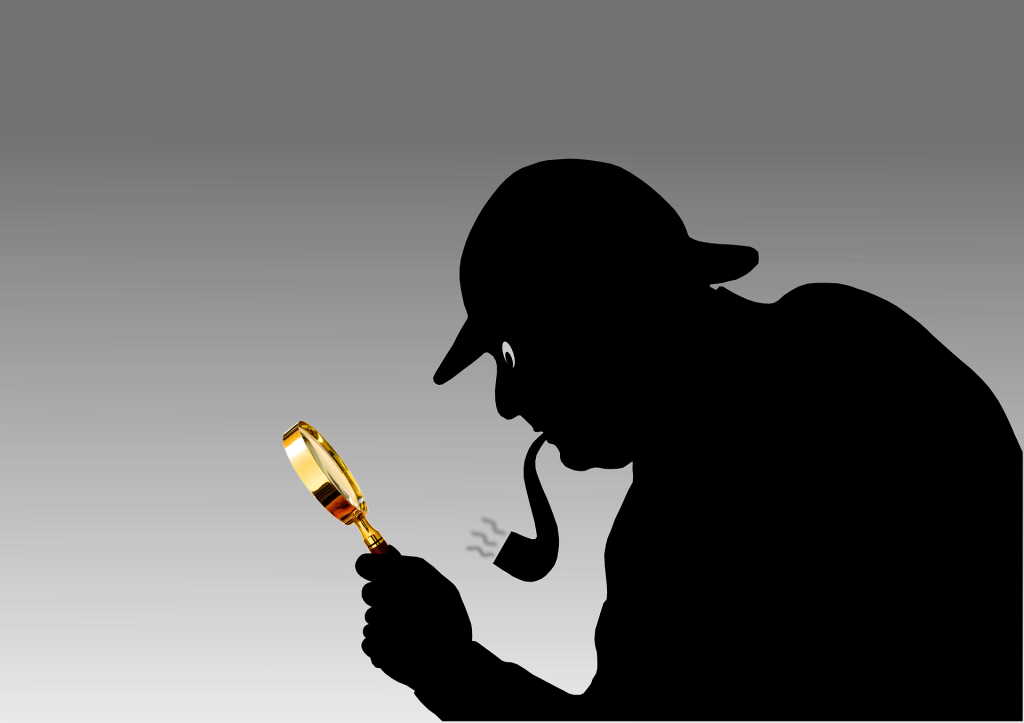Miss Sherlock Figures Out the Sounds
The Way I Hear It
Gael Hannan (The Way I Hear It) is a hard of hearing advocate that understands both sides of the fence between the consumer and the hearing health care professional. Gael’s columns are humorous, sometimes cutting, but always constructive and to the point.

We’re driving through Oregon, returning home to Canada after two months of touring southwestern United States in Flag, our fifth wheel.
Rain starts to plop on the windshield. I’ve always heard rain, but on a highway at high speeds, this sound mixed with other road noises and wasn’t always distinguishable. But today I heard the distinctive “plops” and then I noticed another, higher, tinkly sound. My hearing aid (left ear) and my sound cochlear implant sound processor (right side) were delivering the raindrops in two different frequencies – lower on the left, higher on the right. Once I figured out it out, the sensation was delicious, different, tinkly. I felt proud – I heard this!
This is the bimodal life – one sound has two different profiles when delivered through different technologies; I hear acoustically with a hearing aid and electronically with a cochlear implant.
But as a new bimodal babe, I have to play detective to figure out the origin of some sounds which I may have heard all my life, but now they’ve changed in shape, frequency, and volume. People who have had hearing loss for any length of time understand this reality: we have to readjust to new “hearing” on a regular basis.
Obviously, when our hearing becomes worse, sounds lose clarity, become quieter or disappear completely. Understanding speech becomes especially challenging. Hearing also changes when we get new technology – sound is crisper, definitely LOUDER, and there are sounds that we’d forgotten or have never heard. Clocks ticking, water dripping, people breathing through their nose – the fun stuff.
Hearing perks up when we change our wax guards or our sound processor’s microphone protectors. It changes when we’re tired or when we are in a noisy place. And it certainly changes when our tinnitus flares up or is particularly bad.
We have to do some deductive reasoning to identify sounds. Driving the car, I see raindrops. I hear a sound at the same time of each raindrop. Eureka – that’s the rain I hear!
For the first few months after receiving my implant last year, things were tickety-boo, as we say in our family. But then I had a setback when tinnitus and hyperacusis set in, more debilitating than I had ever experienced. At first I thought my cochlear implant wasn’t working well, but that wasn’t the problem. My tinnitus was now compromising the quality of my hearing. When I’m listening in noise, the tinnitus gets roaringly worse, whereas noisy situations used to mask my head sounds.
My hearing professionals say my case is “complicated,” and the audiologists decided to dial things back a bit to give my brain some time to readjust. I’m only now getting back to where I was four months post-implantation, with mappings slowly increasing my “dynamic range.” My audiologist suggested that I stop doing auditory practice for a while and I’m just now starting up again. The tinnitus still interferes, but it may never go away, so I need to adapt. That’s the human condition – always adapting to changes, however small, in our lives.
I’ve gone back to the beginning of figuring out some CI-delivered sounds.
With the really high frequency sounds – the songs of the smallest birds, keys tinkling, and rain on the windshield, I hear them perfectly with my cochlear implant. But the wing movement of birds as they move about in the bushes – where I can’t see them – is less high frequency and it’s a fuzzy, hissy sound that could be anything: slippers on a carpet, the air conditioner spewing out air, water rushing in the sink. I’m still trying to differentiate those sounds. I hear them, they don’t immediately register as a specific sound.
With low sounds that my left ear says is car traffic, my CI side hears a hum. But a leaf blower outside also hums. I’m supposing that hearing people can tell the difference between a car motor and a leaf blower. And, is it really that important? What is important, is the unidentified beeping somewhere in the house, making me run from room to room checking out possible culprits. Sometimes, I heard a beeping with such a high frequency that I could hear it only through my sound processor. Turns out it was the warning sound that my CI batteries were about to die. I’m slow, sometimes.
And while I do try to keep up my detective work, I have the patience of a flea. It’s much easier to ask the Hearing Husband, “what’s that sound”?
This article first appeared in Gael’s column in HearingHealthMatters.org, The Better Hearing Consumer, and is printed here with permission.

